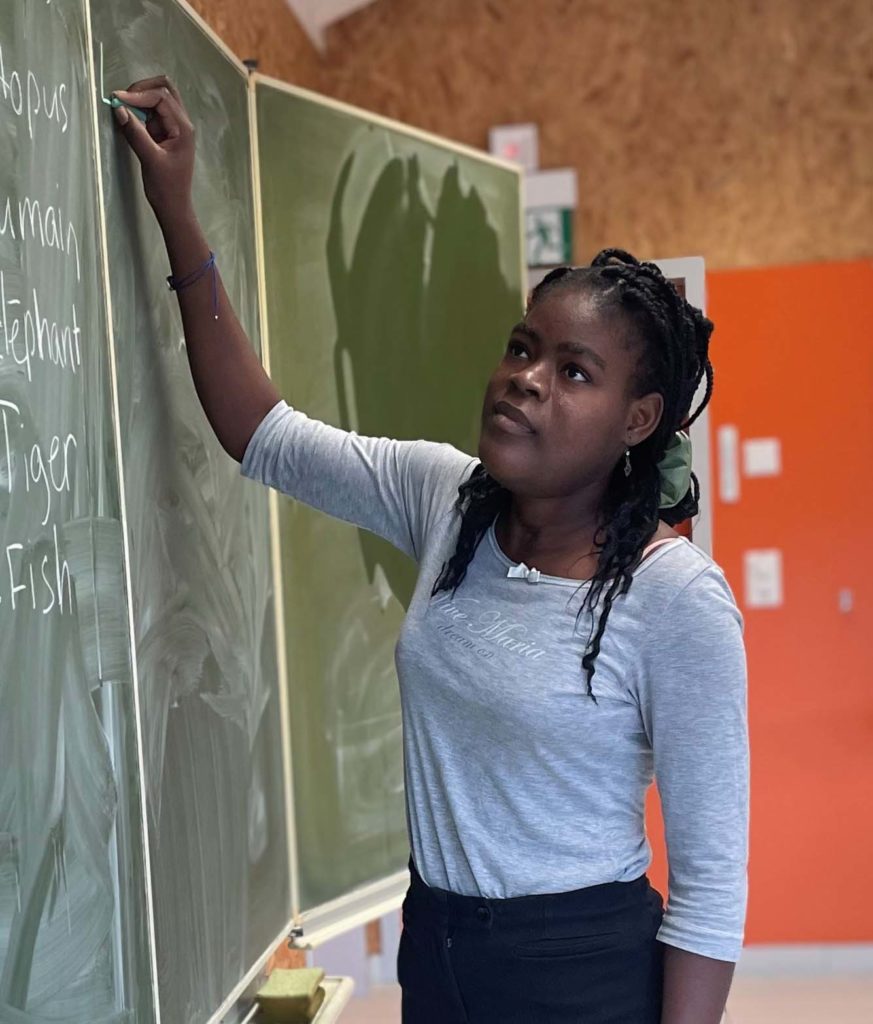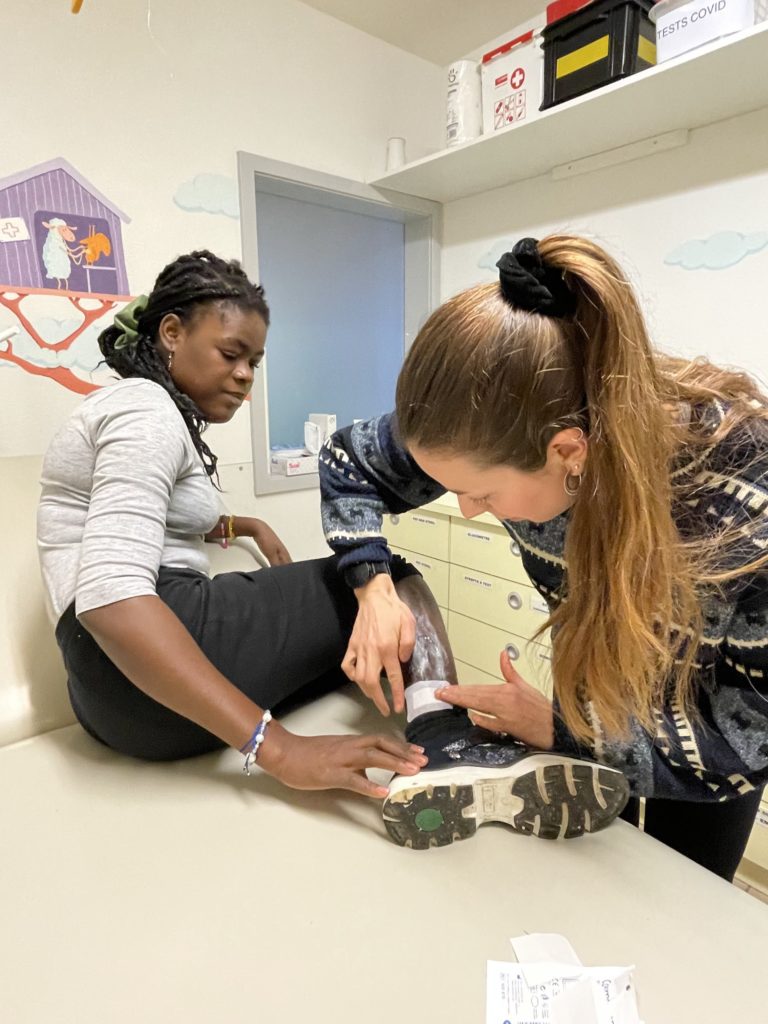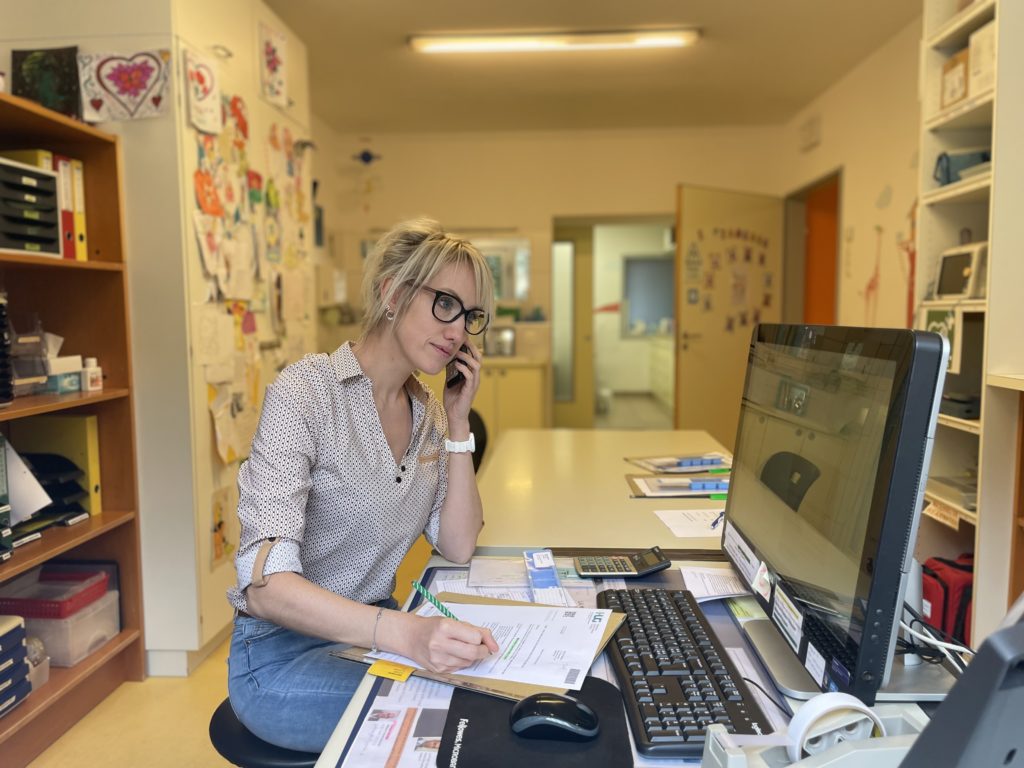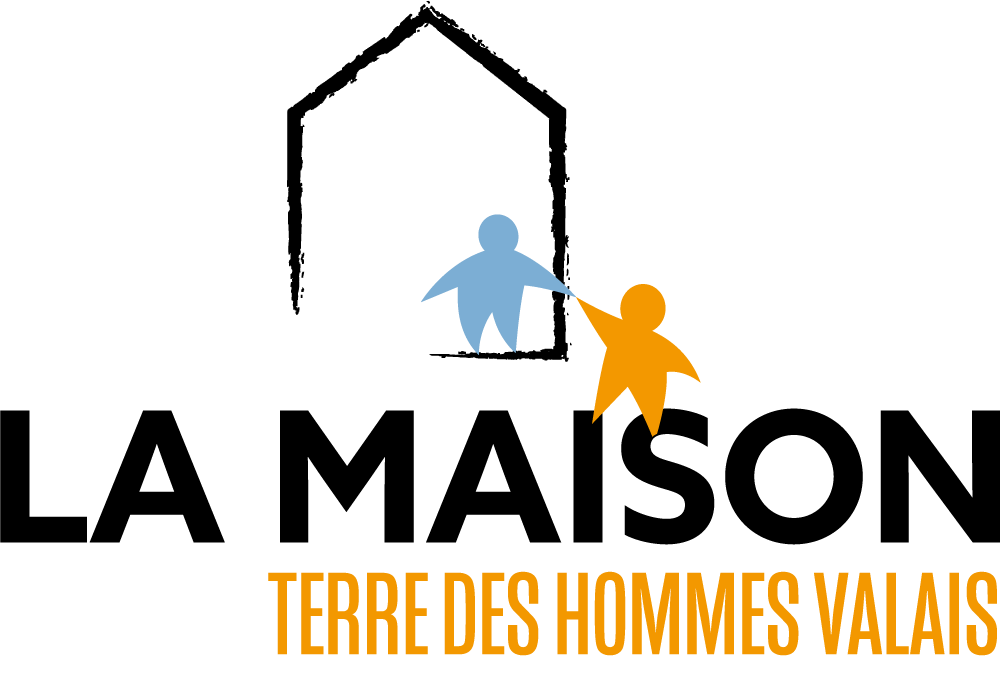You can’t force a doctor to do what he can’t do…
written on the 06.03.2024Aisseta : A COURAGEOUS FIGHT AGAINST A RARE TUMOUR
In the heart of the majestic Chablais mountains, a poignant story unfolds: that of Aisseta, a young woman born in Burkina Faso in December 2001. Her life was turned upside down when she was diagnosed with ameloblastoma, a devastating tumour of the face. Shy and reserved, Aisseta shares with resilience her journey since her diagnosis in May 2022. It illustrates the importance and power of solidarity in her fight against the disease.

Disconcerting challenges
Aisseta was entrusted to La Maison de Terre des hommes Valais by the friendly Sentinelles foundation, which is very active in Burkina Faso.
Aisseta reveals with moving sincerity the stages of her fight against ameloblastoma. Her shyness is only slightly diminished by our invitation to share her journey. Her moving account begins with her feelings on the day of her diagnosis. “You can’t force a doctor to do something he can’t, even if you can pay for it. It’s the decision, that’s how it is. I accept what comes into my life.
A calm, resolute acceptance emanates from her words, demonstrating the young woman’s strength of character in the face of a complex medical reality. Emotions run high as she recalls the disconcerting challenges she and her family faced in Burkina Faso, where unfortunately treatment was not an option.
Disconcerting challenges
Aisseta takes us through the twists and turns of her life, punctuated by difficult choices in circumstances beyond her control. Her courage is revealed in her unwavering acceptance of life as it is, even in its darkest moments. Burkina Faso, the scene of her first trials, becomes a place of hope where she sees herself one day helping others. This interview reveals the strength of a young woman who has had to navigate the tumultuous waters of a disease that profoundly affects her body, desperately seeking solutions where none seemed to exist.
Listening to her authentic testimony, and that of Emilie Tiquet and Chloé Biselx, nurses at La Maison, reveals a complex storyline, revealing the emotional aspects hidden behind the veil of her illness. Through her modesty, Aisseta teaches us about the power of silence, which sometimes resonates louder than words. She reminds us that every story, however complex, contains an inner strength capable of overcoming the most daunting challenges.
La Maison on the road to recovery
Her arrival at La Maison de Terre des hommes Valais marked a crucial turning point in her fight. “At first, it was difficult to be here away from my family, but La Maison and the people here have become my family too. They help me when I have to go to hospital, and even my friends ask me questions when I come back. It’s like one big family…” reveals the young woman from Burkina Faso.
The importance of La Maison in her healing journey cannot be underestimated. Over and above the medical care, the caring environment and psychological support were key elements in her healing process. As Aisseta says: “When you go to hospital, your parents aren’t there, and La Maison fulfils that role.

A dream: to become a nurse
Beyond her battle, Aisseta shares her dream. “I’d like to work as a nurse. But to be a nurse, you have to study. Despite the obstacles, her love of learning and her determination shine a light on a promising future.

INTERVIEW WITH EMILIE AND CHLOÉ, NURSES AT LA MAISON
Integration was difficult for Aisseta, marked by the complexity of her ameloblastoma. Emilie recalls the young woman’s initial reticence, resulting from the ridicule she endured in her country. “She didn’t communicate with anyone, was suspicious and kept her hood up all day. She avoided contact, but over time, our respective efforts helped to establish a bond of trust,” explains the professional.
The nursing team felt it was crucial to tell Aisseta about the positive changes she had seen in her care over the weeks. It was an obvious encouragement. This gradual approach was essential and gradually helped to establish this bond of trust, making it easier for her to open up to herself and to others. “This approach also restored her self-confidence and enabled her to look at herself in the mirror again with satisfaction. She’s smiling again and wants to take care of herself,” says Chloé.

When asked about the challenges faced by the nursing team in caring for Aisseta, Emilie says that the biggest challenge was starting a dialogue when she first arrived, as she didn’t express her needs or respond to our questions. “We had to put strategies in place to break through her shell, enter her world and understand her experiences so that we could support her as best we could,” explains the healthcare professional.
An impressive but benign tumour
When asked how the complexity and rarity of ameloblastoma was dealt with in the care she received, Chloé explains: “Before she arrived, we researched this pathology, which is impressive but nonetheless benign. Care currently consists of monitoring her mouth, speech, diet and old scars. The physiotherapists are also carrying out lymphatic drainage of her cheek.
Emilie emphasises Aisseta’s autonomy and her ability to deal positively with hospitalisations and consultations, highlighting the ongoing support of her godmothers and the regular attention of an educator. “Aisseta is an adult. She’s 22 years old, so as soon as she arrived she understood the rules of the Home and what her stay in hospital was all about”.
The two nurses are very optimistic about Aisseta’s health and future. “When she arrived in Switzerland, her diet was limited to “smooth, cold” foods. Today, she eats a normal diet without any problems,” reveals Emilie. As far as Chloé is concerned, Aisseta has shown great determination, as evidenced by her progress in Switzerland. “We are convinced of her ability to fully realise her dreams, including that of becoming a nurse. We have total confidence in her potential,” concludes Chloé.

A future full of hope
We were delighted to accompany Aisseta during her stay in Switzerland. Thanks to many people, not all of whom know each other, her hope became action. Solidarity and responsibility knew no borders. Thank you, Aisseta.
Aisseta, we wish you all the best for the future, and hope that all your dreams, especially that of becoming a nurse, come true.
The Sentinelles Foundation and La Maison join forces to offer brighter futures
The Sentinelles Foundation is emerging as a crucial pillar for the future of people like Aisseta in Burkina Faso. Thanks to this partner foundation, she has found medical help in her country and in Switzerland.
Since 1980, the Sentinelles Foundation has been working in partnership with La Maison to organise the transfer of young patients to Switzerland when their local medical care is limited. Cases such as those of children suffering from noma or other facial disorders are treated at Geneva University Hospitals (HUG) or during local surgical missions. In 2023, eight of these children were warmly welcomed to La Maison in an environment conducive to their recovery. Thanks to the excellent technical resources of the HUG, reconstructive surgery offers children the chance to regain a harmonious face. In this way, the Sentinelles Foundation and the Terre des hommes Valais Foundation are demonstrating the crucial importance of partnerships in transforming lives through complex multidisciplinary care.
Deciphering ameloblastoma: a battle against a rare tumour
Ameloblastoma is a rare, aggressive tumour with a high potential for recurrence.It forms near the teeth, in the region of the molars and lower jaw.It damages the bone tissue and gums, causing swelling and pain.This tumour can affect people of all ages. It is most common in people in their twenties and thirties.
Treating this disease is a serious medical challenge. The main solution is precise surgery to remove it, minimising the risk of recurrence. This operation is designed to protect the bone tissue and gums. The aim is to restore health and prevent future damage. Skin grafts are often necessary. They contribute to physical healing and to restoring patients’ confidence and quality of life.
